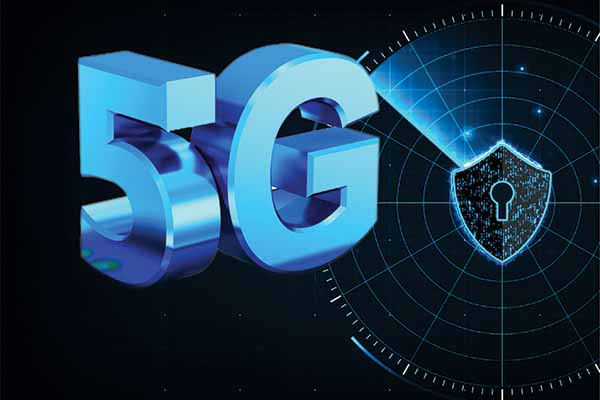The impact of 5G is ubiquitous. With enhancing mobile connectivity, 5G also opens new doors on how organisations have been doing business.
High speeds and low latency makes 5G crony for businesses and industries which are already looking to digitize their services and applications vigorously. With the power of Internet of Things (IoT) defining new business processes, 5G network is interconnecting billions of devices leading to use cases like smart cities, AR/VR on mobile networks, remote medicine and much more.
But with such access to network and devices getting smart and connectivity coming to the forefront, security is emerging as a major challenge. Security capabilities are a critical element for your 5G-ready success.
Does 5G Brings Along Bigger Risks?
Today, the concept of “5G security” lacks an official definition as the technology is still fairly new and evolving.This is not to say that 5G security does not exist. In fact, security was one of the primary considerations in 5G’s development and planning.
When it comes to 5G security, we need to think about it as a balancing act. On one hand, security was built into 5G from the ground up. However, along with the increased bandwidth and speed, a tidal wave of new devices and connections will make managing security much more difficult.
At its core, 5G was built to ensure the reliability of connections. An Ericsson white paper lists five core properties of 5G security: resilience, communication security, identity management, privacy, and security assurance. According to the document, 5G’s trustworthiness is made possible by a set of security features that were built using system design principles applied with a risk-based mindset.
Delving into the technical details of the 5G security architecture is beyond the scope of this article. But if there is one element that stands out and should be highlighted here, it is the concept of network slicing.
Network slicing allows different networks and services to share the same infrastructure but are isolated and segregated from each other. Network slicing carves out (or slices, as it were) specific types of network traffic to match various use cases — be it enterprise, consumer, IoT or public safety.
5G’s security architecture allows for significant performance benefits and diversity of applications as it leverages network slicing, cloud-based resources, virtualization, and other emerging technologies.
With these additions and changes, however, new security risks and additional attack surfaces must be addressed.
The Security Risks Introduced
Increased attack surface: With millions and even billions more connected devices, 5G makes it possible for larger and more dangerous attacks. Current and future vulnerabilities of the existing internet infrastructure are only exacerbated. The risk of more sophisticated botnets, privacy violations, and faster data extraction can escalate with 5G.
More IoT, more problems: IoT devices are inherently insecure; security is often not built-in by design. Each insecure IoT device on an organization’s networks represents another potential hole that an attacker can expose.
Decreased network visibility: With 5G, our networks will only expand and become more usable by mobile users and devices. This means much more network traffic to manage. But without a robust wide area network (WAN) security solution like Secure Access Service Edge (SASE) in place, companies may not be able to gain the network traffic visibility required to identify abnormalities or attacks.
Increased supply chain and software vulnerabilities: Currently and for the foreseeable future, 5G supply chains are limited. Vulnerabilities exist — particularly as devices are rushed to market — increasing the potential for faulty and insecure components. Compared to traditional mobile networks, 5G is also more reliant on software, which elevates the risk of exploitation of the network infrastructure.
The Security Enhancements It Includes
Beyond network slicing, 5G offers several significant security enhancements compared to its predecessors like 4G and LTE. With these enhancements, organizations are able to reap many benefits. Here we will outline the most prominent enhancements and explain how they can benefit your organization.
First, 5G is more capable of protecting your identity. For the first time, your connection is shielded from rogue devices that may capture phone calls by mimicking cell towers. Your ID with 5G is encrypted.
Plus, a more robust encryption algorithm scrambles the traffic when your voice and data travels from your device to the cell tower. What this means is hackers with powerful computers won’t want to take the time to decrypt your info.
5G also lends itself to more intelligent software and “virtual” hardware. Instead of specialized hardware that could be compromised, your data can be routed through virtual hubs and switches that can be moved or changed quickly if required.
Finally, there’s edge computing — which is all about where data is processed. With traditional or cloud computing, data may have to travel to a server far away. With edge, it’s processed much closer to the source, enabling the ability for improved threat detection.
With these enhancements, you’ll be able to:
- Quickly and securely enable branch/remote locations to conduct business outside the corporate office
- Provide mobile users safe access to the internet so they can conduct business remotely
- Deliver secure access to applications and provide consistent user protection for network alternative deployments
- Improve defenses against advanced mobile threats with deep insights
- Quickly and securely deploy network alternatives, deliver secure access to applications, and provide consistent user experiences
- Improve productivity by enabling safe mobile access to the internet and supply quick remediation capabilities in the event of a cyber attack
5G Security Benefits and Concerns
The transition to 5G technology provides organizations with plenty of benefits, yet it is necessary to consider 5G cybersecurity impacts as well:
Decreased Traffic Visibility: As 5G makes mobile networks more usable, employees and business devices may start to use them more. Unless an organization has a WAN solution like Secure Access Service Edge (SASE) in place, this could mean that these companies would lose visibility into some business traffic.
Increased IoT Usage: IoT devices have historically had poor security, creating potential gaps in an organization’s security and expanding its attack surface. With the growth of IoT usage due to the rise of 5G, organizations must deploy IoT security solutions to ensure that their new devices are appropriately protected.
Supply Chain and Software Vulnerabilities: 5G supply chains are limited, and the new mobile technology is more dependent on software than traditional mobile networking. This increases the potential for exploitation of 5G network infrastructure.
These potential security impacts add to the potential cyber risks associated with these devices. With the advent of 5G, organizations require network security solutions that are designed for and capable of protecting these 5G-connected devices.
India’s Future With 5G
India’s Finance Minister promises 5G service in 2022 or 2023, and the country has a new feather in its hat: 5Gi has become India’s first ever contribution to the world standard for mobile radio interface technologies. As telcos and citizens prep for 5G in their own ways, Network World Asia looks at the progress the country is making towards 5G. In late 2021, India Union Minister for Railways, Communications and Electronics, and Information Technology Ashiwini Vaishnaw had forecast that the 5G spectrum was likely to take place by May 2022. Vaishnaw also hinted that the telecom sector will witness certain reforms in its regulatory structure in the coming years.















